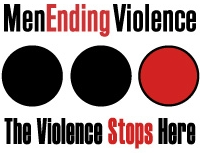Resisting Media Representations.
How Women Can Effectively Challenge the Way They Are Represented
A Literary Review
by Silvia Almanza Alonso
TV shows, advertisements, magazines and fashion displays are some examples of media that construct and represent women in a very standardized, offensive and stereotypical way. These media forms tell women how to look, and which behaviours are acceptable by creating a unique recipe for beauty, success and happiness: be white, be ridiculously small, and be perfectly ok as an object of sexual desire. Not conforming to this ideal is not considered different, it is wrong and shameful. Race, class, gender, ability, education, sexuality are some of the intersectional categories which are ignored most of the time in the way media socially constructs and represents women. While not all women are equally affected, younger women become more vulnerable to this misleading reality. But the question is: What can women do today, tomorrow and in the future to resist and challenge these messages? How can we fully realize that what we see in the media is an inaccurate representation of what womanhood is supposed to look like?
What is Media Literacy and Why it Matters?
Media scholars unanimously agree that media messages are constructed. “TV commercials, newspaper news items, captioned photographs, and billboard slogans are all created by someone working within a discernible set of social, political, historical, and economic institutions, and seeking to achieve a particular effect on the targeted audience”5. The problem lays in the fact that just a minority of the audience are fully aware of this. While many people may say: “yes, I know I’m watching TV, that is not real life”, or “yes, I’m aware company ‘X’ is trying to sell them certain product”, the constant bombardment of images penetrates in our brain to the point that we are convinced that beauty means thinness, and there is no other way. It can be very difficult to fully realize that what media is selling us are pure representations, distant from reality. And here is where media literacy enters to play, as a way of helping us understand how media operates and how we can effectively analyze, discuss, critique and challenge what we see.
“Media literacy is the ability to sift through and analyze the messages that inform, entertain and sell to us every day. It’s the ability to bring critical thinking skills to bear on all media— from music videos and Web environments to product placement in films and virtual displays on NHL hockey boards”6. This ability aims to examine the “…techniques, technologies and institutions involved in media production…” Like the definitions above, media literacy is something that needs to be learned; therefore its importance lies in preparing people for this activity. From this perspective, media literacy as a learning tool has two standpoints: media producers and media consumers. Regarding the producers, “…many media literacy researchers hope to influence the process so that entertainers and journalists might modify their messages to accommodate a more informed and critical audience.” As we will see later on, many of the challenging ways to resist media representations are in the hands of those in the media business. On the other hand, consumers of media representations should be instructed beyond the scholarly environment, but even in “…other venues, such as community events and, most importantly, everyday family life”. Also, we will be able to see, not just the crucial roles of teacher, educators and parents, but also how some organizations present simple tools to challenge media representations from ordinary environments like dinner time.
Special attention has been paid recently to training young learners in media literacy. These programs, usually targeted to teenagers, are very connected with activism and engaging youth in different ways. Youth media programs “…emphasize media production as a form of social activism in local communities… Authentic representation and “voice” are emphasized in programs that are designed to give adolescents opportunities to strengthen leadership skills and advocate for issues of concern to them” .
As the popular phrase says knowledge is power, research in the effects of media literacy has shown that “…education is associated with reduced susceptibility to tobacco use among children and adolescents and increased skepticism about perceptions of the thin ideal in beauty and fashion magazines among adolescent girls”. This is just a simple example of the powerful effects that media literacy programs can have in the life of people.
Resisting Media Representations by Silvia Almanza Alonso – Read the entire document here




